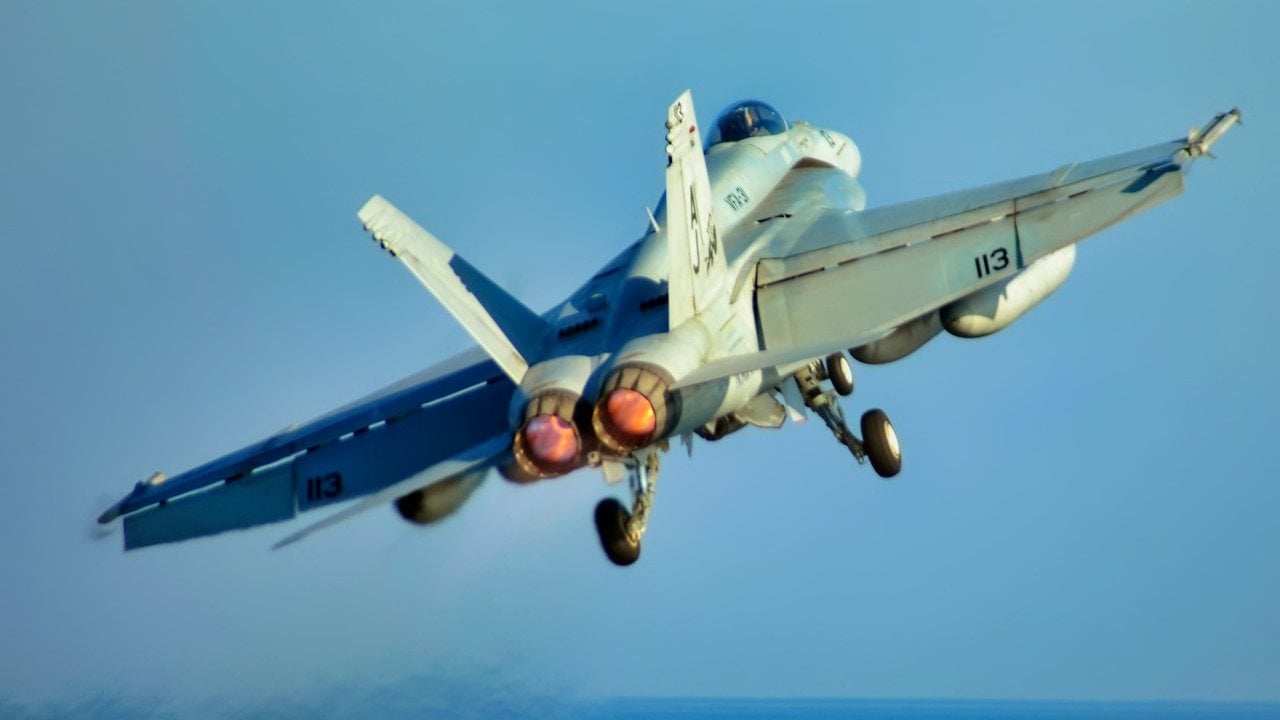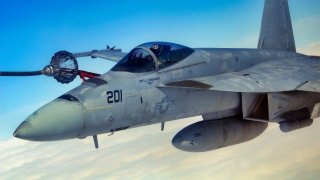F/A-18 Super Hornet: The U.S. Navy's Ultimate Aircraft Carrier Fighter Plane
The F/A-18 Super Hornet fighter plane, produced by Boeing, has been in service since 1999 and is a key asset for the U.S. Navy and is one of the best warplanes on Earth today.
Summary and Key Points: The F/A-18 Super Hornet, produced by Boeing, has been in service since 1999 and is a key asset for the Navy.

-It replaced the F-14 Tomcat and has been essential across multiple missions, including air superiority, reconnaissance, and precision strike. The Super Hornet’s design, which features a 20% larger airframe and 33% more internal fuel capacity, allows for extended range and endurance.
-The latest Block III variant, currently in testing, offers enhanced capabilities such as advanced networking and a reduced radar cross-section.
What Makes the F/A-18 Super Hornet So Special?
Back in January, U.S. and UK aircraft and warships carried out strikes on more than 60 Houthi targets in Yemen. As previously reported, the aircraft included four Royal Air Force Eurofighter Typhoons, while more than a dozen U.S. Navy F/A-18 Super Hornets were employed in the airstrikes, which were carried from the aircraft carrier, the USS Dwight D. Eisenhower (CVN-69).
Carrier Air Wing 3, one of the oldest air wings in the Navy, operates from the Nimitz-class nuclear-powered carrier with F/A-18 Super Hornet, E-2 Hawkeye, and EA-18G Growler squadrons aboard.
F/A-18 Super Hornet in the Spotlight
The F/A-18 E/F Super Hornet, which is now manufactured by Boeing following its merger with McDonnell Douglas in 1997, has been produced in two distinct versions including the single-seat F/A-18/E and the dual-seat F/A-18/F. The advanced aircraft entered fleet service in 1999, as the replacement for the F-14 Tomcat.

It marked the second major model upgrade since the inception of the F/A-18 aircraft program highly capable across the full mission spectrum: air superiority, fighter escort, reconnaissance, aerial refueling, close air support, air defense suppression, and day/night precision strike.
The single-seat F/A-18E and the two-seat F/A-18F are high-performance, twin-engine, mid-wing, and multi-mission tactical aircraft designed to replace the F/A-18C (single-seat) and F/A-18D (two-seat) aircraft as they reach the end of their service lives and retire.
As the final variants of the original multirole F/A-18 aircraft, the model offered a 20 percent larger airframe, while the Super Hornet could carry an additional 33 percent more internal fuel, which increased its mission range by 41 percent while its endurance was increased by 50 percent over the earlier aircraft.
Yet, despite being super-sized, the F/A-18E/F actually has 42 percent fewer parts than its predecessor the F/A-18C/D variant.
Multirole and More
The Super Hornet has performed as a multirole attack aircraft via the use of different external equipment, while the fighter jet's advanced networking capabilities have allowed it to accomplish very specific missions.
In this way, it has been utilized as a "force multiplier" where it has been deployed to meet the various challenges that a carrier might face. In its fighter mode, it has served as an escort and provided fleet air defenses from enemy aircraft and other threats; while in its attack mode, it has provided force projection, interdiction, and close and deep air support.
The F/A-18E/F continues to meet current Navy fighter escort and interdiction mission requirements and has been employed in an increasing range of missions, including Forward Air Controller (Airborne) and Aerial Tanking, as they have proven capability to replace the S-3 as an aerial tanker.

F/A-18E/F enhancements include increased range and improved carrier suitability required for the F/A-18 to continue its key strike fighter role against the advanced threats of the 21st century.
F/A-18 Super Hornet: Additional Improvements
F/A-18 E/F Block II Super Hornet, which has been in service since 2001, further incorporated a number of capabilities-enhancing technologies over the course of the last 20 years. the Block II iteration has earned a reputation as the backbone of the Navy’s carrier air wing and a workhorse within the fleet. The final F/A-18E/F Block II production aircraft was delivered to the Service in April 2020.
The latest Block III upgrade, which is currently undergoing test and evaluation, will extend the platform's service life and range and incorporates an advanced cockpit system, reduced radar cross section, and an advanced networking infrastructure. The Boeing Company delivered two F/A-18 Block III Super Hornet test jets to the U.S. Navy in June 2020, with production to follow successful testing and a contract in place to provide 78 new-build F/A-18 Block III jets to the Service through the rest of this year.
The U.S. Navy's Blue Angels Flight Demonstration Squadron, which had flown the F/A-18 Hornet since 1986, began the transition to the F/A-18 Super Hornet in 2020.
Author Experience and Expertise: Peter Suciu
Peter Suciu is a Michigan-based writer. He has contributed to more than four dozen magazines, newspapers, and websites with over 3,200 published pieces over a twenty-year career in journalism. He regularly writes about military hardware, firearms history, cybersecurity, politics, and international affairs. Peter is also a Contributing Writer for Forbes and Clearance Jobs. You can follow him on Twitter: @PeterSuciu. You can email the author: [email protected].
All images are Creative Commons and Shutterstock.


